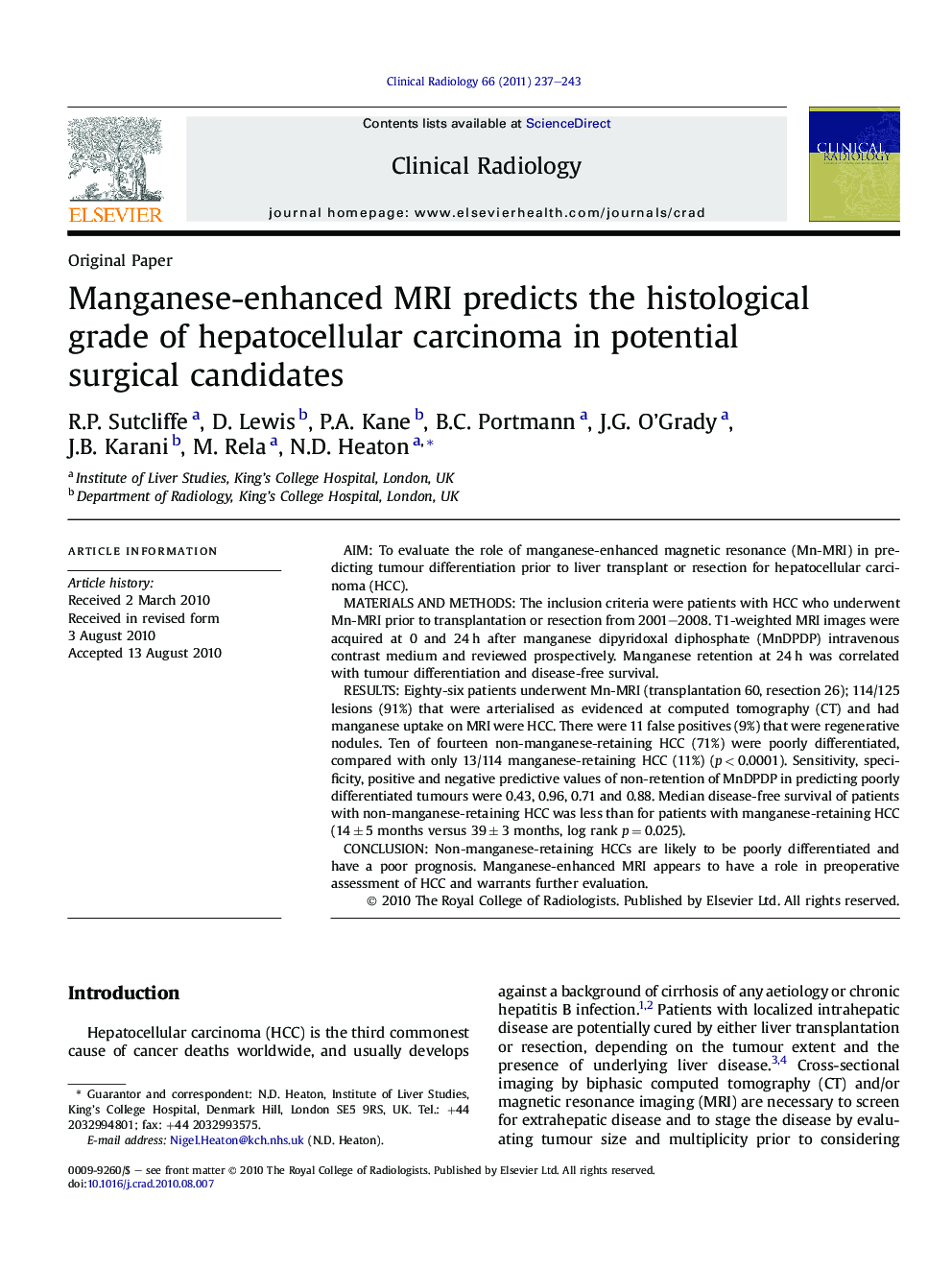| Article ID | Journal | Published Year | Pages | File Type |
|---|---|---|---|---|
| 6191058 | Clinical Radiology | 2011 | 7 Pages |
AimTo evaluate the role of manganese-enhanced magnetic resonance (Mn-MRI) in predicting tumour differentiation prior to liver transplant or resection for hepatocellular carcinoma (HCC).Materials and methodsThe inclusion criteria were patients with HCC who underwent Mn-MRI prior to transplantation or resection from 2001-2008. T1-weighted MRI images were acquired at 0 and 24 h after manganese dipyridoxal diphosphate (MnDPDP) intravenous contrast medium and reviewed prospectively. Manganese retention at 24 h was correlated with tumour differentiation and disease-free survival.ResultsEighty-six patients underwent Mn-MRI (transplantation 60, resection 26); 114/125 lesions (91%) that were arterialised as evidenced at computed tomography (CT) and had manganese uptake on MRI were HCC. There were 11 false positives (9%) that were regenerative nodules. Ten of fourteen non-manganese-retaining HCC (71%) were poorly differentiated, compared with only 13/114 manganese-retaining HCC (11%) (p < 0.0001). Sensitivity, specificity, positive and negative predictive values of non-retention of MnDPDP in predicting poorly differentiated tumours were 0.43, 0.96, 0.71 and 0.88. Median disease-free survival of patients with non-manganese-retaining HCC was less than for patients with manganese-retaining HCC (14 ± 5 months versus 39 ± 3 months, log rank p = 0.025).ConclusionNon-manganese-retaining HCCs are likely to be poorly differentiated and have a poor prognosis. Manganese-enhanced MRI appears to have a role in preoperative assessment of HCC and warrants further evaluation.
